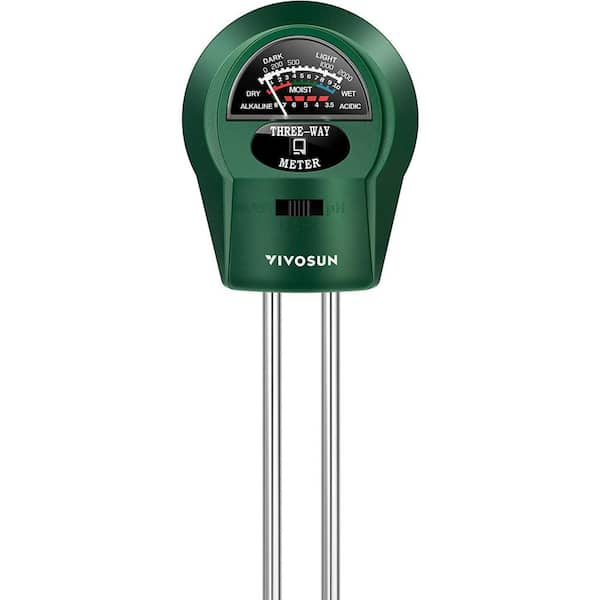Delve Into the Globe of Moisture Meters: Every Little Thing You Required to Know
In the realm of moisture meters exists a globe of precision and practicality that often goes undetected. These gadgets, while seemingly straightforward, hold a wide range of info that can significantly influence different industries and applications. Recognizing exactly how moisture meters operate, the various types available, and their varied uses can clarify their significance in ensuring top quality and effectiveness. By exploring the details of wetness meters, one can reveal a useful device that transcends plain measurement, offering understandings that can make a substantial distinction in numerous areas.
How Moisture Meters Work
Moisture meters operate by gauging the electrical conductivity or capacitance of materials to establish the moisture material existing. These meters are invaluable tools throughout numerous industries, including agriculture, woodworking, and building. By utilizing different techniques such as pinless or pin-type modern technology, moisture meters offer exact analyses that help specialists make educated decisions.
Pin-type moisture meters work by placing the sharp pins into the material being evaluated. The electrical conductivity between the pins is then determined, with higher wetness degrees causing raised conductivity. Moisture Meter. On the various other hand, pinless wetness meters make use of electro-magnetic signals to check a bigger location without triggering any type of damage to the material's surface. These meters are perfect for rapidly evaluating wetness levels in large areas or ended up items.
Regardless of the approach made use of, wetness meters play an important function in avoiding concerns such as mold development, structural damage, or item flaws brought on by excess moisture. Understanding just how these meters job is necessary for making sure the quality and integrity of products in different applications.
Kinds Of Moisture Meters
Offered the important duty dampness meters play in different sectors, it is necessary to comprehend the various kinds available to specialists for accurately assessing moisture levels - Moisture Meter. There are largely two major kinds of dampness meters: pin-type and pinless dampness meters

On the various other hand, pinless wetness meters make use of electro-magnetic sensor plates to check a larger location of the material without causing any kind of damage. This kind is suitable for promptly scanning big locations and is typically made use of for flooring, wall surfaces, and ceilings. Pinless meters are convenient for taking readings on completed surface areas without leaving any type of noticeable marks.
Both kinds of dampness meters have their advantages and are selected based upon the particular needs of the job handy. Comprehending the distinctions between these types is crucial for experts to make exact moisture assessments.
Applications Across Industries
Building and construction experts rely on dampness meters to evaluate the dampness levels in structure products like drywall, wood, and concrete, which is important for maintaining structural honesty and stopping issues like rot or mold. The flooring sector uses dampness meters to measure the dampness content in subfloors prior to installing different flooring coverings, stopping expensive problems due to excess wetness. In the food sector, moisture meters are utilized to check and control moisture degrees in items such as grains, nuts, and dried fruits to preserve quality and high quality.
Tips for Making Use Of Moisture Meters
Utilize the moisture meter's calibration settings to visit this page guarantee accurate readings when measuring the moisture content in various materials. Additionally, make sure the meter is established to the correct dampness range for the material you are determining to acquire the most accurate results.
When using a pin-type moisture meter, insert the pins to the appropriate depth recommended for the product being examined. This makes certain that the dampness analyses are drawn from the appropriate depth within the product, supplying a much more accurate representation of its dampness web content. For pinless wetness meters, remember to maintain correct call with the material's surface area to obtain dependable readings.
On a regular basis inspect and change the batteries in your wetness meter to stop imprecise readings due Recommended Site to reduced power. Store the meter in a risk-free and dry location when not being used to extend its lifespan and preserve its accuracy. By adhering to these suggestions, you can make the most of the efficiency of your moisture meter and acquire specific moisture content dimensions throughout different materials.
Upkeep and Calibration
To guarantee the accuracy of wetness material measurements, normal maintenance and calibration of the moisture meter are important steps in its proper functioning. Calibration adjusts the moisture meter to ensure that it provides dependable and consistent outcomes.
Calibration needs to be executed occasionally, specifically if the click resources wetness meter is utilized often or in crucial applications where accurate measurements are called for. Several dampness meters include calibration devices or can be adjusted by expert services. Moisture Meter. It is advised to maintain a log of calibration dates and results to track the performance of the dampness meter with time. By preserving and calibrating the moisture meter routinely, users can rely on the accuracy of the moisture web content measurements obtained.
Conclusion

In verdict, moisture meters play a vital role in different markets by properly determining the dampness content of materials. Recognizing how these devices work, the various kinds available, and appropriate upkeep and calibration are crucial for obtaining reliable results. Whether in farming, production, or construction, the use of moisture meters helps guarantee quality assurance and effectiveness in procedures.

In final thought, moisture meters play an important function in various industries by accurately gauging the dampness web content of products.